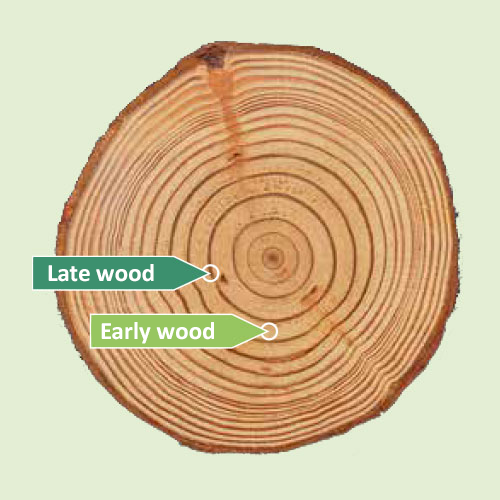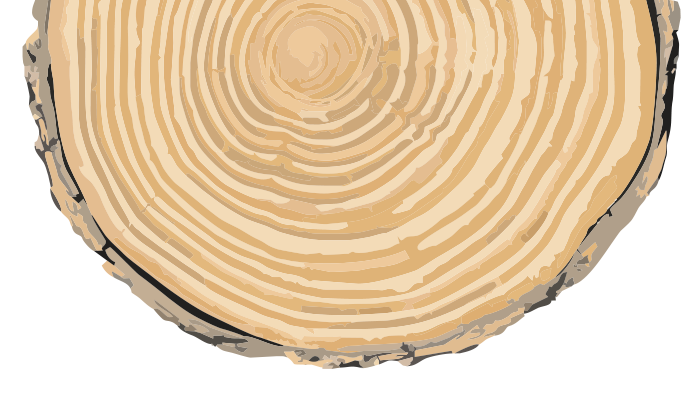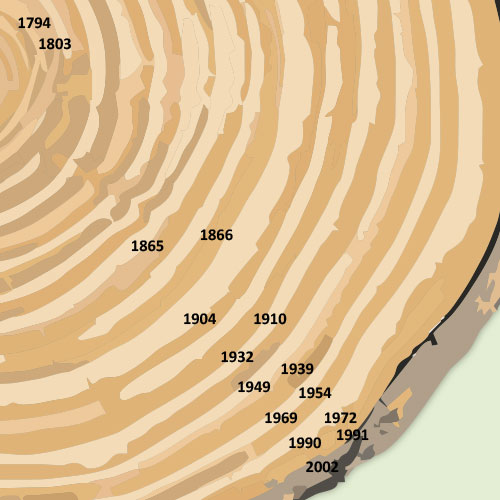Annual tree rings – autobiography of trees
To unfold its leaves in spring, the tree has to transport an enormous amount of nutrients from its roots up to its crown. To do so, it builds relatively large-diameter transport vessels (xylem and phloem). In summer and autumn, cells are increasingly generated to store reserve substances and to stabilize the trunk. We can see these differences with the naked eye as a color transition from lighter early wood to darker late wood. Tree growth is suspended in winter.
This process is repeated every year. Therefore, we can determine the age of a tree by counting the number of annual tree rings on a slice of the trunk. Annual rings are not equally recognizable in all tree species. The rings of larch, Douglas fir, ash, and oak can be clearly seen. With maple or birch, the contrast between early and late wood is not that great and counting is difficult.
Annual rings tell stories
You can see from the annual rings how the tree has fared in the course of its life. If they are narrow and close together, the living conditions were not so good. This may have been due to drought, lack of nutrients, pests, or a constricted tree top. Wide growth rings indicate a strong growth and that the tree has experienced the best living conditions. Scientific research with annual tree ring widths is called dendrochronology. It makes it possible to determine from an old wooden beam or slice of tree trunk when and how the tree lived.

Early wood: light-colored areas arise from spring (new growth) to summer.
Late wood: denser and thus darker wood is formed from late summer to autumn.

The annual rings in tree trunks are created by the changing seasons. In spring the tree builds large-diameter transport vessels, as it needs to transport lots of water and nutrients to the tree top to unfold its leaves. The wood that is formed during this time is light-colored. In summer and autumn, cells are created that store nutrients and strengthen the trunk. This wood is darker colored. A tree ring consists of a layer of light spring wood and a layer of darker late wood.

Wood grain
If you cut long boards from a tree trunk, the annual rings form lines and patterns in the wood. This is called the grain. Using these patterns, an expert can recognize which tree species the wood comes from.
The next station is waiting for you.



